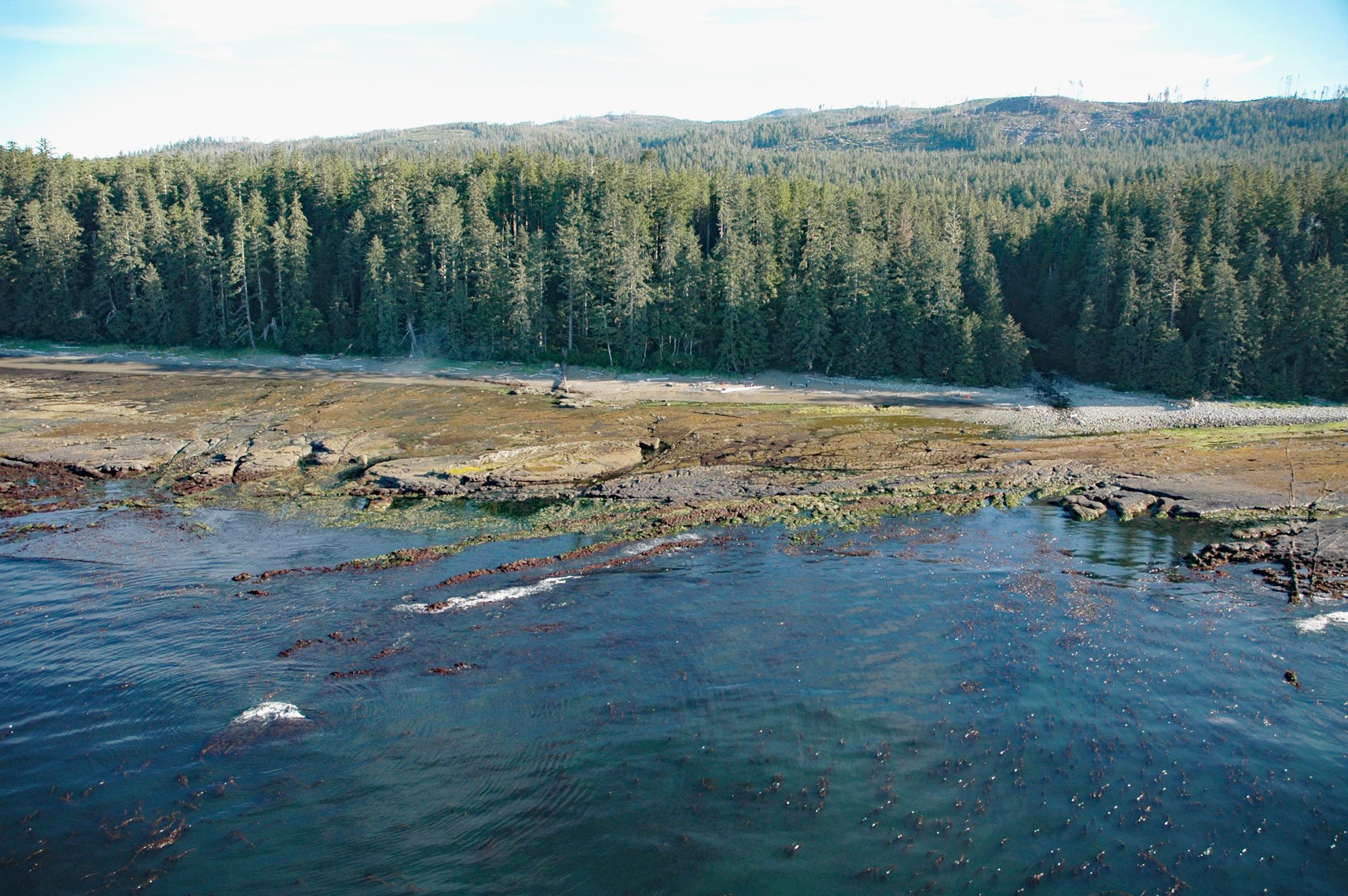Michigan Creek starts at an elevation of 1400 feet (427 m) and flows generally south for 4 miles (6.4 km) through the coast mountains on Vancouver Island and enters the Pacific Ocean in the Pacific Rim National Park Reserve 1 mile (1.6 km) east of the Pachena Point Light Station, about 81 miles (130 km) west-northwest of Victoria and 8.5 miles (14 km) southeast of Bamfield, British Columbia. The watershed is an intensively logged temperate rainforest. The creek was named after the vessel Michigan that wrecked here in 1893.
Michigan was a steam-powered lumber schooner of 566 tons, one of 225 known schooners similar to the Wapama that served the lumber trade and other coastal freight services along the Pacific Coast between San Francisco and Puget Sound. Michigan was built at Skamokawa, Washington by Ludwig Mortensen for William M. Colwell and George L. Colwell. The ship had a lumber capacity of 400,000 board feet. On January 21st, 1893, Michigan was heading north to Puget Sound and encountered a strong northerly current along the Olympic Peninsula and passed the entrance to the Strait of Juan de Fuca. The error was not known by the crew and the vessel was turned east and went aground on the reefs and ledges of Vancouver Island. The sea conditions were relatively calm and the 22 crew and 4 passengers managed to get ashore after daylight. The crew was able to retrieve a boat from the shipwreck and reach Neah Bay for help, a distance of 33 miles (53 km) across the Strait of Juan de Fuca.
In August 1893, Mascotte was sent to salvage what remained of the Michigan shipwreck. Mascotte was built in Victoria, British Columbia by Smith and Warner for James C. Prevost and was outfitted with a crane and machinery for heavy salvage. Mascotte was working on recovering cargo and valuable equipment from the sunken Michigan, and while at anchor in Pachena Bay, caught fire and burned to the waterline. The crew managed to escape the burning wreck and hike to the Cape Beale light station. Read more here and here. Explore more of Michigan Creek and Pacific Rim National Park Reserve here:

